Compliance Gate Platform
Find US, EU & UK Compliance Requirements for Your Products
- Create customised compliance requirements lists
- Manage certification, labelling, and safety testing
- Get access to a dedicated consultant

Affordable:Get access from only $179 per year

Save hours:Find product requirements in 2 min instead of 5 hours
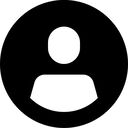
User-friendly:Created for non-experts and busy professionals
Find product requirements in 2 minutes
Manage the process step-by-step

Step 2: Create product certificates
Access ready-made templates for the US, EU and UK
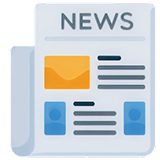
How do you keep the platform updated?
We monitor US, EU & UK sources each month
You will receive a monthly report listing news/updates
The platform is also regularly update
Covered Products (Examples)
Below are examples of product categories and materials the platform covers to some extent.
General Consumer Products
Many products do not fall under product-specific regulations or directives. However, the platform covers regulations, chemical restrictions, labelling and certification requirements for general consumer products sold in the US, EU and UK.
Examples: Accessories, bags, pet products, household decor, artworks, phone cases, laptop cases, stationery items, leather goods
Product Examples

Electronics
.png)
.png)
.png)

Toys
.png)
.png)
.png)
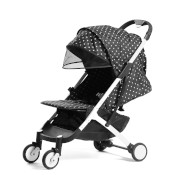
Children’s Products
.png)
.png)
.png)

Food Contact Materials
.png)
.png)
.png)

Training Equipment
.png)
.png)

Product Packaging
.png)
.png)
.png)

Textiles
.png)
.png)
.png)
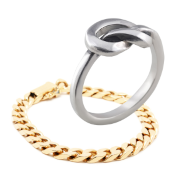
Jewelry
.png)
.png)
.png)

Watches
.png)

Footwear
.png)
.png)
.png)

PPE
.png)
.png)

Furniture
.png)
.png)
.png)

Mattresses
.png)

Candles
.png)
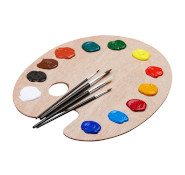
Art Materials
.png)

Measuring Instruments
.png)
.png)

Machinery
.png)
.png)

Batteries
.png)
.png)
.png)
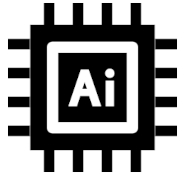
AI Devices
.png)
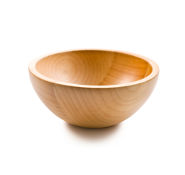
Wood and plant products
.png)
.png)
.png)
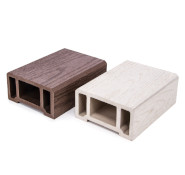
Construction Products
.png)
.png)

Home Products
.png)

Arts and crafts
.png)
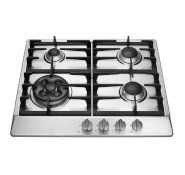
Gas Appliances
.png)
.png)

Medical Devices
.png)
.png)
.png)

Recreational Crafts
.png)
.png)

Cosmetic Products
.png)
.png)
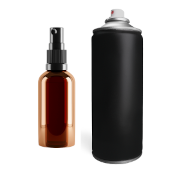
Aerosol Dispensers
.png)
.png)

Biocides
.png)
.png)
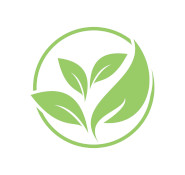
Ecolabel
.png)

Consumer Rights Directive
.png)

Pesticides
.png)
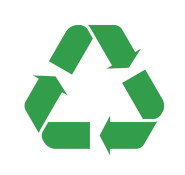
Environmental claims
.png)

National Organic Program
.png)

Occupational Safety and Health
.png)
Can’t find your product?
The Compliance Gate Platform can be useful for most consumer products, even if not mentioned above.
However, the platform does not cover cosmetics, supplements, chemicals, and food and beverages.
Covered requirements
Notice that the platform only covers the items listed in the US / EU / UK Databases linked below:

Hi, I’m your dedicated consultant!
You will be supported by
Ivan Malloci,
Fredrik Gronkvist
and John Vinod Khiatani
-
Plans
-

Subscription
-

Support tickets
-

Users
-
Features
-

Compliance Requirements List (View)
-
>
.png)
United States
-
>
.png)
European Union
-
>
.png)
United Kingdom
-
-

Document templates
-
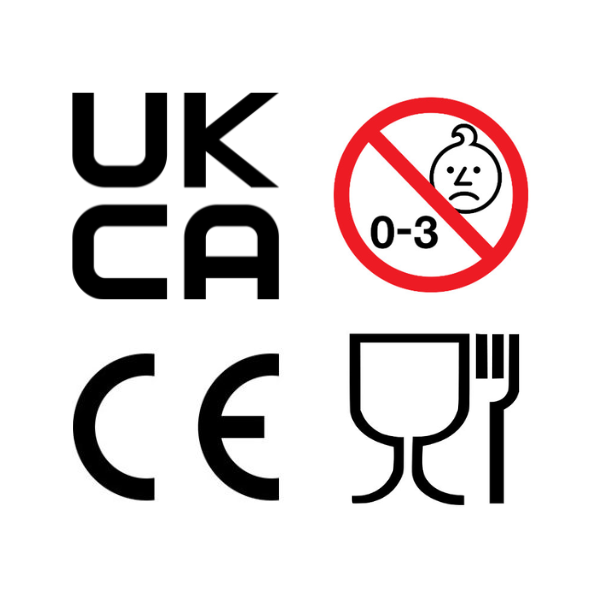
Label creator
-
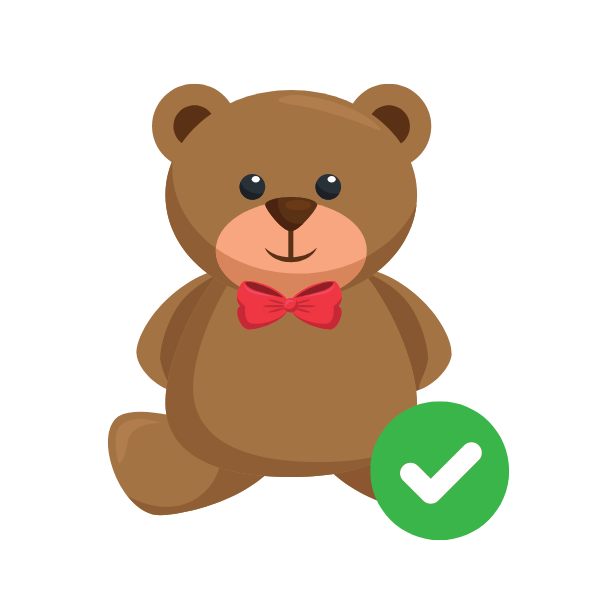
Book lab testing
-
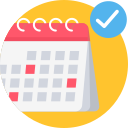
Monthly Compliance Report
-
-
Plans
-

Subscription
12 Months Access
Equals $14.9 per month
-

Support tickets

-

Users
1 user
-
Features
-

Compliance Requirements List (View)
-
>
.png)
United States
-
>
.png)
European Union
-
>
.png)
United Kingdom
 Full Access
Full AccessUnlimited use
-
-

Document templates

-

Label creator

-

Book lab testing

-

Monthly Compliance Report

-
Plans
-

Subscription
12 Months Access
Equals $24.9 per month
-

Support tickets
3 x Tickets
-

Users
1 user
-
Features
-

Compliance Requirements List (View)
-
>
.png)
United States
-
>
.png)
European Union
-
>
.png)
United Kingdom
 Full Access
Full AccessUnlimited use
-
-

Document templates

-

Label creator

-

Book lab testing

-

Monthly Compliance Report

-

Premium
$499per year
Full access for 12 months, plus 15 support tickets and 3 users
-
Plans
-

Subscription
12 Months Access
Equals $41.5 per month
-

Support tickets
15 x Tickets
-

Users
3 users
-
Features
-

Compliance Requirements List (View)
-
>
.png)
United States
-
>
.png)
European Union
-
>
.png)
United Kingdom
 Full Access
Full AccessUnlimited use
-
-

Document templates

-

Label creator

-

Book lab testing

-

Monthly Compliance Report

Included in every plan (at no additional cost)
Personal onboarding session ($129 value)
We will help you add your first product and show how to use the platform (30-min video call)

No additional cost
ComplianceGate Academy ($79 value)
Instant access to tutorials and videos demonstrating how you can use the platform features.

No additional cost
Can I cancel at any time?
Yes, and we will send 2 email reminders before any renewal
Disclaimers
General Disclaimer: The Compliance Gate Platform is not a lawyer or a law firm and does not engage in the practice of law or provide legal advice or legal representation. All information, software, services, and support provided on the site are for informational and self-help purposes only and are not intended to be a substitute for professional legal advice. Use of the Compliance Gate Platform and this site is subject to our Terms of Service.
Compliance Requirements List Disclaimer: We can not guarantee complete coverage of every single relevant regulation, standard, and requirement that may apply to a certain product or scenario, or that the information provided is free from errors or is covering every single rule, option, exemption or other information that may be applicable to a certain product or scenario.
1. We do not claim that the summaries cover regulations/requirements in their entirety.
2. We only cover the items listed in these documents:
• US Database
• EU Database
• UK Database
Templates Disclaimer: We can not guarantee that the templates used to generate documents are free from mistakes and are up to date, or that they are relevant to your pecific product or scenario. Further, we do not claim to provide templates for all documents/certificates in the US, EU, or UK or to provide templates for all documents/certificates that can apply to a certain product.
Source Disclaimer: We cannot guarantee that all information presented on the platform and generated documents are up to date. The latest version of the relevant source text is always the most authoritative source text.
Platform Updates: We review a set of official sources to monitor new and updated regulations and other requirements on a monthly basis. We send a report each month summarizing our findings and specify if we deem it necessary to update the platform. See these documents for more information:
• US Database
• EU Database
• UK Database
1. There is always a delay from the announcement to implementation in the platform.
2. Note that not all news or updates result in platform updates, and we do not guarantee that we ‘catch’ every single new or updated compliance requirement.
Other information
1. The platform does not generally cover European national and US state standards and regulations. Further, the platform does not cover product standards, such as EN 71 or ASTM F963.
2. Technical problems can occur when creating, saving or downloading compliance requirements lists and other files due to extenuating circumstances like software bugs or internet issues. This can result in the downloaded document being incomplete or otherwise incorrect.
3. Read the Feature Overview to learn more about the features of the Compliance Gate Platform, and their limitations and risks.
Product Tour Video
Documentation

Feature Overview
This document explains the use case, data sources, limitations, and risks of the following Compliance Gate Platform features:
- Compliance Requirements Lists
- Document templates
- Label creator
- Lab testing
- Support tickets
- Monthly reports / updates

US Database
Compliance Requirements List (CRL)
- We only cover the regulations/requirements listed in this document.
- We specify which regulations/requirements are monitored and provide the URL. Not all entries in the database have sources that are actively monitored.
- You can see the current status of each entry and the source version they are based on.
Document Templates
- We only cover document templates listed in this document.
- You can see the current status of each document template and the source version they are based on.

EU Database
Compliance Requirements List (CRL)
- We only cover the regulations/requirements listed in this document.
- We specify which regulations/requirements are monitored and provide the URL. Not all entries in the database have sources that are actively monitored.
- You can see the current status of each entry and the source version they are based on.
Document Templates
- We only cover document templates listed in this document.
- You can see the current status of each document template and the source version they are based on.

UK Database
Compliance Requirements List (CRL)
- We only cover the regulations/requirements listed in this document.
- We specify which regulations/requirements are monitored and provide the URL. Not all entries in the database have sources that are actively monitored.
- You can see the current status of each entry and the source version they are based on.
Document Templates
- We only cover document templates listed in this document.
- You can see the current status of each document template and the source version they are based on.

Data Management & Security
This guide covers the following:
- Security
- How to remove your product data
- Subscription expiry
- Terminate account
- Backups
Compliance Gate Platform FAQ
General
Feature Overview
The Feature Overview document explains the use case, data sources, limitations, and risks of the following Compliance Gate Platform features:
- Compliance Requirements Lists
- Document templates
- Label creator
- Lab testing
- Support tickets
- Monthly Reports / Updates
Please read this document and this FAQ carefully.
Product Database
- Self-Managed: 200
- Standard: 200
- Premium: 500
- Enterprise: 2,000
Usage rights
- Self-Managed: Your organisation
- Standard: Your organisation
- Premium: Your organisation
- Enterprise: Your organisation / Third parties (Info)
What is the purpose of the Compliance Gate Platform?
The purpose of the Compliance Gate Platform is to help businesses manage practical aspects of the compliance process. This is an example of a workflow:
1. Create a compliance requirements list to find relevant compliance requirements
2. Access the latest version of the relevant legislation, guidance document, or other sources to identify specific product safety, labelling, documentation, and other requirements.
3. Book third-party lab testing
4. Create declarations and certificates using the templates
5. Create product and packaging label files using the label creator
Support tickets
Throughout this process, you can ask questions to our team by submitting support tickets.
Use case principle
The Compliance Gate Platform is built to streamline parts of the compliance process that can be time consuming and tedious. However, the platform functions as a navigation tool rather than a definitive source for product compliance requirements. As such, it is important to always take action based on the latest version of the relevant legislation, guidance documents or other sources.
What are some benefits of the Compliance Gate Platform?
Here are some of the key benefits of using the Compliance Gate Platform:
Launch new products: Find compliance requirements, create mandatory documents, create labels, and book testing.
Discover new requirements: You can also use the Compliance Gate Platform to find requirements that you may not be aware of already.
Save time: Researching compliance requirements online can take hours, and you may not even know where to start. With our platform, you can find requirements in minutes, while also having access to ready-made templates, easy to use label layouts, and access to lab testing companies.
Wide product range: You can combine modules to research requirements for a wide range of consumer, commercial, and industrial products. Are you selling battery-powered electronic toys? Then select the modules for electronics, batteries, and toys.
Is the Compliance Gate Platform easy to use?
The Compliance Gate Platform was created with a clean UI and accessibility in mind. Our ambition is to make the process as direct and streamlined as it can be.
That being said, we don’t claim to make the product compliance process simple or easy. Ultimately, you must follow the requirements in the latest version of the relevant legislation, guidance documents, or other sources. Such requirements can be complex.
The Compliance Gate Platform can be a helpful tool for navigating requirements and completing parts of the process, but it does not provide shortcuts or provide ways to avoid compliance requirements.
Does the Compliance Gate Platform only cover consumer products?
No, the platform covers many products that are not consumer products. Examples include machinery, protective equipment, and medical devices.
Why are there so many feature limitations and risks?
There is no established standard for what a product compliance software can or cannot do. It’s therefore essential that we are transparent and clearly explain how the platform and features were created.
This also means that we must be transparent and carefully disclose the risks and limitations of the platform and its features. More information can be found in the Feature Overview linked above.
Does the platform cover all regulations and requirements that may apply to a certain product?
No, we do not have a complete database of all existing regulations, directives, standards, rules, or other compliance requirements that may apply to a certain product.
The products listed on this page indicate that we cover at least some compliance requirements that relate to these products.
You can find a list of covered items here:
Do you guarantee my products become compliant and safe if we use the platform?
The Compliance Gate Platform is not capable of approving or confirming if a product is fully compliant. The platform depends entirely on user inputs to create compliance requirements lists and use other features.
Which products do you cover?
You can see a list of product categories on this page. The products listed on this page indicate that we cover some compliance requirements that relate to these products.
Which sources do you use?
The Compliance Gate Platform database is based on publicly available information from official sources in the US, EU, and UK. Here are some examples:
- europa.eu
- EUR Lex
- eCFR
- US government agency websites (e.g., CPSC, FCC, FDA, DOE, FTC, and USDA)
- gov.uk
- legislation.gov.uk
Does the platform provide access to standards?
The Compliance Gate Platform does not cover product standards that are not publicly available. Hence, it does not cover the contents of EN standards, ISO standards, ASTM standards, ANSI standards, or UL standards.
Which countries or markets do you cover?
We only cover compliance requirements in the following countries and markets:
- United States
- European Union
- United Kingdom
Do you cover US state requirements?
Here are some examples of US state-level regulations and compliance requirements covered:
- California Proposition 65
- Uniform Law Label
- Bag Suffocation Warning
- Resin Identification Codes (RIC)
- RoHS
- Uniform Packaging and Labeling Regulation (UPLR)
- Model Toxics in Packaging Legislation
However, we do not cover all US state-level regulations that concern product compliance.
Further, some of the entries that relate to US state regulations only serve as summaries that explain the broader set of requirements across different states.
Do you cover European national requirements?
No, we only cover EU regulations and directives, not national regulations or standards.
Do you cover customs and tax regulations?
No, the Compliance Gate Platform does not cover regulations that relate to customs procedures or taxes.
We only focus on requirements relevant to the product and its packaging.
Compliance Requirements Lists
What is a Compliance Requirements List?
1. Compliance Requirements Lists (CRL) are created based on the following user inputs:
- Market
- Module/s
- Specifications and parameters
2. By creating a requirements list, you can find relevant product regulations and other requirements.
3. Each Compliance Requirements List (CRL) contains Compliance Requirements List (CRL) entries.
Which regulations, directives, and other requirements are covered?
The Compliance Requirements List database only cover US, EU and UK regulations listed in these documents:
What is a CRL entry?
1. Each CRL entry contains a brief overview of a certain regulation, directive, document, or other compliance topic. It may, for example, include references to the following areas:
- Product scope
- Exemptions
- Definitions
- General requirements
- Substance restrictions
- Documentation (if any)
- Labelling (if any)
- Lab testing
- Sources
2. A CRL entry serves the following purposes:
- It provides the user with a general overview of requirements
- It can help you navigate through relevant articles/annexes/regulations/parts (e.g., labelling and documentation requirements)
- It serves as a first introduction to a certain regulation, directive, document, or other compliance topic
- It guides the user to relevant legislation, guidance pages, and other sources
3. A CRL entry does not contain the entire legislation, guidance document or other source. As such, it does not contain all requirements or details found in the relevant source.
How do you create CRL entries?
1. We take the following steps when writing a CRL entry:
- Select the regulatory text and/or other sources (e.g., guidance page)
- We analyse the text to identify parts we deem relevant (e.g., labelling requirements)*
- We list selected articles/annexes/regulations/parts in the CRL entry*
2. The format of each CRL entry depends on the type of regulation or other requirement it covers. We also have different templates that are applied depending on the complexity of the source text/s. Further, the format is continuously updated. For all these reasons, the structure of the CRL entries differs.
*We generally only list requirements for manufacturers and/or other entities that must actively manage the compliance process. We do not list requirements relevant for government bodies, third-party service providers (e.g., notified/approved bodies), marketplaces, fulfilment centres, and other entities.
How should we use CRL entries?
1. A CRL entry provides a general overview or index. It serves as a first introduction to a certain regulation, directive, document, or other compliance requirement.
2. You can access the primary source by clicking on the blue button below the introduction, or follow the links in the source footer. Ensure that you select the latest version of the relevant legislation, guidance pages or other sources.
3. You must ultimately take action based on the requirements in the latest version of the relevant legislation, guidance pages or other sources. You should not take action based on the CRL entry alone as it does not contain all requirements of the source/s.
Sources and versions
1. Each CRL entry is based on legislation texts and/or official guidance pages/documents.
2. We primarily use data from the following sources:
- europa.eu
- EUR Lex
- eCFR
- US government agency websites (e.g., CPSC, FCC, FDA, DOE, FTC, and USDA)
- gov.uk
- legislation.gov.uk
3. Each CRL entry is based on the source version available at the time of writing.
4. You can find information about the CRL entry versions, monitored sources, and how we manage updates in the following documents:
Limitations and risks
You can find a list of limitations and risks related to Compliance Requirements Lists in this document.
How can we benefit from creating a Compliance Requirements List?
It can take hours of research to find information about relevant product compliance requirements in legislation databases, such as EUR Lex or the eCFR. This also assumes that you even know where to look for information in the first place.
Our platform makes it possible to create Compliance Requirements Lists in a far shorter time frame. The time saving can be immense, especially if you are not already familiar with product compliance requirements.
That said, it is important to understand that researching relevant requirements is only the first step in the process. You must ultimately take action based on the latest version of the legislation, guidance page or other source that a CRL entry is based on.
Do I need to create one Compliance Requirements List for each product?
Yes, you generally need to create a Compliance Requirements List for each product as the requirements depend on product specific parameters.
Do I need to create one Compliance Requirements List for each country/market?
Yes, you need to create a unique Compliance Requirements List for each product and market. For example, if you sell the same product in the US and the EU, then you must create two separate Compliance Requirements Lists.
Does a Compliance Requirements List cover all requirements applicable to our product?
Our database is limited to the items listed in these documents:
We do not claim to cover all existing regulations that may apply to a certain product, category, or industry. Further, we do not claim to cover all regulations and other compliance requirements that apply to products.
Do the modules/product examples cover all applicable requirements for that category?
No, we do not claim that the modules cover all requirements that may exist for a particular product category. For example, the EU electronics module covers requirements that we know exist and apply to electronic products in the European Union.
But, there may still be other requirements that apply to electronics that are not covered by our database. This is also why we state that the product examples provided on the website are examples of product categories and materials the platform covers to some extent.
Do CRL entries contain all requirements of the covered regulation/directive?
The CRL entries do not contain the entire legislation source text. Hence, they do not cover every requirement, scenario, or piece of information present in the source text.
1. A CRL entry serves as an introduction that provides a general overview of requirements (available at the time of writing) relevant to manufacturers or other entities that actively manage the compliance process. While it serves as a first introduction, it is not intended as an exact step-by-step guide for how compliance can be achieved. It would not be possible to write a summary that provides a specific roadmap for every single product.
2. A newer version of the legislation, guidance page or other source that the CRL entry is based on may exist. This means that articles, regulations, parts, or other requirements may not be present in the CRL entry.
3. You must ultimately take action based on what is written in the latest version of the relevant legislation, guidance page or other source.
Can you guarantee that all CRL entries are free of errors?
We do our best to fact-check the summaries, but given the quantity of information, and that the sources may be updated after publication, we cannot guarantee that the summaries are completely free of error.
You must ultimately take action based on what is written in the latest version of the relevant legislation, guidance page or other source.
At what stage should I create a compliance requirements list?
You should create a Compliance Requirements List as early as possible in the product development process. This is because the list can direct you to relevant product regulations, which contain information about safety, labelling, and testing requirements that have a direct impact on the design and functionality of the product.
Do the Compliance Requirements Lists include standards?
Product standards are sometimes referenced (directly or indirectly) if these are referenced in a regulation, directive, or compliance requirement. That said, we do not have access to standards and their contents are therefore not included in the CRL entries.
Document Templates
What is a document template?
1. Certain regulations mandate the creation of declarations, certificates, technical documentation and other documents. Such documents can be requested by national authorities and marketplaces, such as Amazon.
2. The document templates are based on legislation and/or official guidance documents.
Which templates are included?
You can find a list of US, EU and UK templates (and the data and versions these are based on) in these documents:
How do you create document templates?
1. We base document templates on what is written in legislation and/or guidance documents.
2. For example, the EU Declaration of Conformity is based on the EMC Directive 2014/30/EU > ANNEX IV.
How should we use document templates?
1. Start by selecting a document template relevant to your product.
2. You must carefully read the instructions in the right sidebar and follow these guidelines:
- You may need to make edits to the document template headlines before adding information.
- Open the source link and select the latest version of the relevant legislation, guidance page or other source
- Ensure that you fill in a template based on the latest available version of the source/s
Note: The templates are only updated during an annual audit in October. As such, the templates may be outdated if the source (legislation or guidance document) is updated after the annual audit. It is therefore important to check the latest source version.
3. Add information to the fields and upload image files (when necessary). Note that some documents can only be issued if there is other supporting documentation, such as test reports.
4. Download a PDF copy of the document after completion and ensure that you maintain backups at all times.
Note: Certain regulations require that documents be maintained for a certain period of time (e.g., 10 years after you have placed a product on the market). Further, some documents must also be printed and signed.
Sources and versions
1. Each document template is based on legislation texts and/or official guidance pages/documents.
2. We primarily use data from the following sources:
- europa.eu
- EUR Lex
- eCFR
- US government agency websites (e.g., CPSC, FCC, FDA, DOE, FTC, and USDA)
- gov.uk
- legislation.gov.uk
3. Each document template entry is based on the source version available at the time of writing.
4. You can find information about the document template versions, sources, and how we manage updates in the following documents:
Limitations and risks
You can find a list of limitations and risks related to the Document Templates in this document.
Do you provide templates for all documentation required in the US, EU and UK?
No, we only provide the templates listed here:
We do not claim to provide templates for all documentation/certification requirements in existence in the mentioned markets, or that may apply to a particular product.
How do you keep the Document Templates up to date?
The templates are only updated during an annual audit in October. As such, the templates may be outdated if the source (legislation or guidance document) is updated after the annual audit. It is therefore important to check the latest source version.
The template must be adjusted based on the latest version of the relevant article, annex, regulations, part, or guidance document before it is filled in.
What can happen if I don’t have the mandatory compliance documents?
Lacking the mandatory product certificates and other compliance documents can result in a recall, or that your products are removed from marketplaces such as Amazon.
Label creator
What is the label creator
1. The label creator allows you to create product and packaging label files.
2. The files can be downloaded in .svg format.
3. We recommend that you book a third-party label review before affixing label information on the product, packaging, or documentation.
Limitations and risks
You can find a list of limitations and risks related to the Label Creator in this document.
Why do I need to create label files?
Product and packaging labelling is mandatory for essentially all consumer products sold in the US, EU and UK. Some labelling requirements apply to all products, while others only apply to certain product types or age groups.
What should be included in the label file?
The specific information depends on the regulations, directives, standards, and other compliance requirements applicable to a particular product. You must create label files based on what is required and specified in the latest version of the relevant regulation, guidance page or other source.
Where should the labels be placed?
The placement depends on what is required and specified in the latest version of the relevant regulation, guidance page or other source. Certain labels must be printed on the product, while in other cases you have the option to affix labels on the packaging or accompanying documentation.
As mentioned, you must follow the requirements as specified in the latest version of the relevant regulation, guidance page or other source.
At what stage should I create label files?
You need to ensure that your products and the packaging are correctly labelled at the time of manufacturing. You must therefore create all relevant label files before your products enter production.
How do I know if my label is correct?
You can request a label review from several third-parties from within the platform. As such, you can have your label files reviewed by a third-party such as TUV Rheinland or QIMA before printing these.
This can help you reduce the risk of printing incorrect labels on your product and packaging, which can be expensive to correct afterwards. Note that the terms of service of your selected third-party applies.
How can I request a label review?
You can request a label review and upload your label files using the product testing form, or the dedicated label review form. It is also important that you ask the service provider to explain on what basis they will review the label. The scope must be clear before you proceed with a label review.
What am I supposed to do with the label files I create?
You must submit all label files to the manufacturer of the product. Before that, we recommend that you request a label review.
How do you keep the label creator up to date?
The label creator only provides a layout. It does not serve as a template that is based on any particular legislation or other source.
You must insert label information and graphics based on requirements specified in the latest version of the relevant regulation, guidance page, or other source.
What can happen if my products are not correctly labeled?
Products that are not correctly labeled can be subject to recalls, or removed from marketplaces such as Amazon. As such, we recommend that you book a label review before affixing label information on the product, packaging, or documentation during production.
Support tickets
What is a support ticket?
Support tickets allow you to ask questions about US, EU and UK product compliance requirements
directly to our support team. We are available from Monday to Friday.
- You can submit a support ticket listing up to 5 questions.
- Each support ticket can only be dedicated to a single product and market.
- We can generally only provide support related to requirements in the CRL database
How can I use support tickets?
Sources and versions
1. We can only respond based on what is written in regulation texts, guidance pages, and other official sources. Here are some examples of sources we use:
- europa.eu
- EUR Lex
- eCFR
- US government agency websites (e.g., CPSC, FCC, FDA, DOE, FTC, and USDA)
- gov.uk
- legislation.gov.uk
2. This also means that we can only address questions to the extent that these are addressed in the regulation texts, guidance pages, and other official sources. Bear in mind that the sources do not address every possible scenario or question.
3. Note that we can also provide guidance based on our own experience. However, this is limited to practical aspects of the process (e.g., how to submit samples to testing companies).
Limitations and risks
You can find a list of limitations and risks related to the support tickets in this document.
How many questions can we ask per support ticket?
1. You can submit a support ticket listing up to 5 questions.
2. Each support ticket can only be dedicated to a single product and market.
3. You can ask questions related to information in a Compliance Requirements List.
What kind of questions can we ask?
1. You can ask questions about information in the generated compliance requirements lists:
- Product regulations and directives
- Certificates and documents
- Labelling requirements
- Testing requirements
2. You can ask questions about practical areas of product compliance, such as:
- Label file formats
- Lab testing costs
- Supplier vetting
3. Request help with lab test bookings and other third-party services
4. Request feedback on test reports and documents obtained from your suppliers
How many tickets are included?
The number of support tickets depends on your plan:
- Self-Managed: None
- Standard: 3 tickets
- Premium: 15 tickets
- Enterprise: 25 tickets
Can we buy additional support tickets?
Yes, you can buy additional support tickets on this page.
Can you review test reports?
1. You can submit test reports when asking questions.
2. However, we do not ‘approve’ or ‘confirm’ certificates or other test reports. We are not involved in the testing process; we cannot know on what basis a test report was issued.
Can you review our certificates or other documents?
1. You can submit certificates, declarations and other compliance documents when asking questions.
2. However, we do not ‘approve’ or ‘confirm’ certificates or other documents.
Can you review label files?
1. You can ask questions about product and packaging labelling requirements.
2. You can also request guidance related to label file formats and other technical parameters.
3. However, we do not ‘approve’ or ‘confirm’ label files. That said, you can request a third-party label review from our partners via the platform.
How long does it take to receive a response?
We normally respond within 2 work days (Monday to Friday, excluding public holidays in Hong Kong).
However, we may need 4 to 7 work days to respond to questions that require additional research.
Lab Testing and Other Third-Party Services
Third-party services
1. You can request service quotations from lab testing companies and other third-party service providers via the Compliance Gate Platform.
2. For lab testing, we mainly refer our subscribers to QIMA and TUV Rheinland are accredited* by multiple entities:
*The specific accreditations can vary between branches and labs operated by the companies.
3. These companies can often help you suggest relevant testing requirements and standards for certain products.
4. The terms of service of the service provider apply. We do not provide any warranties or guarantees concerning the provided services. Further, we do not actively monitor the communication between our users and the relevant third parties. You must submit a support ticket if you need our input.
Limitations and risks
You can find a list of limitations and risks related to lab testing and other third-party services in this document.
Why is lab testing necessary?
Lab testing is often necessary to verify if a product complies with a certain regulation, directive, or standard. For example, lab testing can determine if a product complies with certain substance restrictions, or mechanical safety requirements set by product standards. Once the lab test is completed, you will receive a lab test report which indicates if the overall result is pass or fail.
How do we know what tests are required for a certain product?
You must first identify relevant product regulations and other compliance requirements. This can help you understand which safety standards, substance restrictions, and other requirements apply to a particular product. This assessment must be based on the latest version of the relevant legislation, guidance page or other source.
Lab testing companies can also help you assess applicable standards, substance restrictions, and other testing requirements. Another option is to contact market surveillance authorities.
Why do I need a lab test report?
Lab test reports, if the result is passed, serve as evidence that your product is compliant with a certain regulation, directive, or standard. Lab test reports can also be requested by market surveillance authorities or Amazon. In addition, mandatory certificates, declarations, and other documents can only be issued if you have already obtained test reports.
What can be done if the test result is failed?
This indicates that the product does not meet the requirements under relevant regulations, directives, or standards. Here are some examples of why testing can fail:
1. The material contains excessive amounts of restricted substances, such as heavy metals or phthalates.
2. The product failed one or more safety tests.
3. The product fails the flammability requirements.
When this occurs, the course of action depends on what caused the product to fail testing. You may need to redesign the product or change materials.
How does the process work?
1. Request a lab test quotation.
2. The testing company normally responds within a few days with a quotation:
- Suggested tests/standards/substances
- Cost
- Sample quantity
- Lab address
- Booking number
3. If you accept their assessment and quotation, you will be instructed to send a certain number of product samples to a designated address.
4. Samples are sent to the testing company.
5. The final invoice is issued.
6. Lab testing takes place (1 to 3 weeks).
7. A lab test report is issued.
Do you offer testing in-house or through partners?
We do not operate our own testing facilities. Instead, we work with lab testing companies with facilities in Asia, Europe, and the United States.
Which countries/regions are covered by your testing partners?
Our testing partners offer lab testing services for companies selling in the US, EU and UK.
Which testing companies do you work with?
We mainly work with the following two testing companies:
- QIMA
- TÜV Rheinland
We also have a wider network of more specialised labs in the EU, US, UK and Asia.
Where are the testing labs located?
Our lab testing partners have testing facilities in Asia, EU, and the United States. Most of our customers use test lab facilities in the country or region where their products are manufactured.
When should I book lab testing?
You need to verify that your product is fully compliant and safe before you start importing and selling a product. Further, the lab test can either take place before or after mass production, or both.
Pre-production testing: Verify if the product/components/construction is compliant. This can be necessary to avoid an inherently non-compliant product entering production.
Batch testing (post-production): Verify if the final product that is to be placed on the market is compliant.
Note that batch testing is mandatory for certain products.
How do we submit samples to the lab?
The testing company will provide the testing lab address once you have confirmed the quotation.
How many samples do I need to send?
The testing company will confirm the number of samples and/or material quantity required.
How do I know what to test for?
Lab testing companies can assess applicable substance tests and standards based on the following:
- Product type and characteristics
- Materials
- Country/states/market
- Age group
Keep in mind that lab testing companies provide this assessment based on the information they have.
Note: If you intend to ensure compliance with certain US state-level or European national regulations or standards, then this must be clearly stated in your quotation request.
Is the lab testing cost included in the subscription?
No, the Compliance Gate Platform subscription fee does not include lab testing costs. Lab testing fees are charged directly by our lab testing partners.
How much does lab testing cost?
There is no standard rate for lab testing. The cost depends on the following factors:
1. The applicable standards and regulations for the product.
2. The number of unique materials/colors and components that must be tested.
3. Product risk factors (e.g. sharp points, magnets, batteries).
Can you estimate testing costs?
At best, we can share cost examples. However, there are many parameters that impact the lab test cost, which makes it hard to compare the cost of testing one product to another.
What can happen if I don’t have a lab test report?
Without lab test reports you may end up selling a product that is non-compliant and unsafe. Furthermore, market surveillance authorities and Amazon can also request a test report. It is expected that you can demonstrate compliance upon request, or you may face recalls and fines.
What other third-party service providers can we access?
Here are some examples of other third-party services you can access via the platform:
- Label review services
- EU authorised representatives
- Instructions authoring companies
- Translation companies
- Government portals
- Product standards vendors
- SDS services
- Licensing
Monthly Compliance Report / Source Monitoring
What sources do you monitor?
1. We monitor regulation texts in the US, EU and UK to keep track of new versions of regulatory requirements covered by the CRL database.
2. You can learn more about monitored sources and our methodology here:
3. We send a report each month summarising our findings and specify if we deem it necessary to update CRL entries.
4. We also monitor news and announcements concerning new regulations and compliance requirements (not already covered by the CRL database).
Limitations and risks
You can find a list of limitations and risks related to source monitoring in this document.
How often do you review the sources?
We review sources once per month. For example, we review updates from April 2026 in May 2026.
How do you keep the platform up to date?
Please open the US / EU / UK Database documents to learn more about platform updates.
Do you guarantee that the Compliance Gate Platform is always up to date?
No, we cannot guarantee that the Compliance Requirements List database is always up to date as we do not implement changes in real-time. Each month, we review updates from the previous month. We also assess if an update to the affected CRL entry is necessary. As such, CRL entries are only updated after sources have been updated.
It is therefore critical that you always take action based on the latest version of the relevant legislation, guidance documents, and other sources.
Further, document templates are only updated during the annual audit.
How are we made aware of news and updates?
1. We normally send a Monthly Report on the 2nd or 3rd Tuesday of each month.
2. You can also find a list of updates in the Compliance Gate Platform update log.
What is the purpose of the Monthly Report?
The Monthly Report is a compilation of compliance news and updates from monitored sources in the US, EU, and UK.
It also helps us to decide internally whether we need to update the Compliance Gate Platform.
How does the report benefit us?
The report can help you stay up to date with new and updated compliance requirements, including those that do not result in an update of the Compliance Gate Platform.
How many reports do we receive each year?
You will receive a report each month, for the duration of your subscription.
Data Management & Security
Data Management
The following topics are covered in the Data Management & Security document.
- Security
- How to remove your product data
- Subscription expiry
- Terminate account
- Backups
Security
1. You can find information about security standards, protocols, and measures in the Data Management & Security document.
2. There is always a risk that a website or application is hacked or for other reasons experience data loss. The latter can happen in case of updates or coding errors. We strongly recommend that you always maintain backups of all files generated or uploaded to the Compliance Gate Platform. The Compliance Gate Platform should not be relied upon as a file storage system.
Usage Rights
The Compliance Gate Platform can either be used for your own organization, or on behalf of the customers of your organisation.
Your organisation (Standard)
1. This means that you can only use the Compliance Gate Platform to create requirements lists, documents, label files, and request support for your own company.
2. This is suitable for most brands, manufacturers, importers, and e-commerce companies using the platform for their own products.
Third-parties (Expanded)
1. You can use the Compliance Gate Platform to create requirements lists, documents, label files, and request support on behalf of your customers:
2. You can use the Compliance Gate Platform to support paid consulting work or support requests from your customers. Examples include:
- Freight forwarders that need to identify requirements for their customers
- Consultants that need to create requirements lists, documents, or label files as part of a project
3. However, the following is prohibited:
- Selling individual requirements lists
- Selling individual document templates
- Selling account access to individual users
4. It is important that your customers read the Feature Overview, US / EU / UK Databases, and the FAQs to understand the scope and limitations of the Compliance Gate Platform.
Payments & Subscription
Can I pay with my Visa or MasterCard?
Yes, we offer credit card payments through PayPal or Stripe. Customers based in certain countries may be required to create a PayPal account in order to make a Credit Card transaction. This is free and only takes a moment. You just need to add your email address and agree with the PayPal Terms of Service. With Stripe, you don’t need to create an account.
Can I pay with PayPal?
Yes, you can pay with your balance, bank account, or credit card through PayPal.
Do you offer a safe payment method?
Yes, all payments on this website are processed by PayPal or Stripe, which use an SSL certificate to encrypt your data.
Will my subscription get automatically renewed?
If you subscribed on or after 2025-05-08, your card will be billed automatically on the date of expiration. However, you can cancel your subscription at any time and, in this case, your card will not be billed again.
Do you have a refund policy?
The subscriber has the right to cancel the purchase up to, but no later than, 14 days from the order date. However, this only applies if the subscriber has not yet logged into the platform and/or used the platform to create compliance requirements lists or templates.
Can I get a partial refund if I cancel my subscription before the expiration date?
No, we don’t offer partial refunds.
Will I receive an invoice for my company?
Yes, it’s delivered together with the payment confirmation email.
Can I pay via bank transfer?
Yes, you can contact us to request an invoice if you prefer to pay via bank transfer. In this case, we will only activate the account once we have received the payment.
Can the subscription activation be delayed?
Yes, you can request a delay in activation after subscribing (if done within 7 days).
1. Reply to the order confirmation email that you will receive after signing up (within 7 days). We will then put your subscription on hold until you request activation.
2. You can set an activation date now or contact us again when you are ready to start using it.
3. You can delay the activation for up to 24 months after your order.
Can the subscription be paused?
No, you cannot pause a subscription that is in use or was not delayed for activation within 7 days after your order.
Terms of Service and Privacy Policy
Where can I find your Terms of Service?
Follow this link to read our Terms of Service.
Where can I find your Privacy Policy?
Follow this link to read our Privacy Policy.






















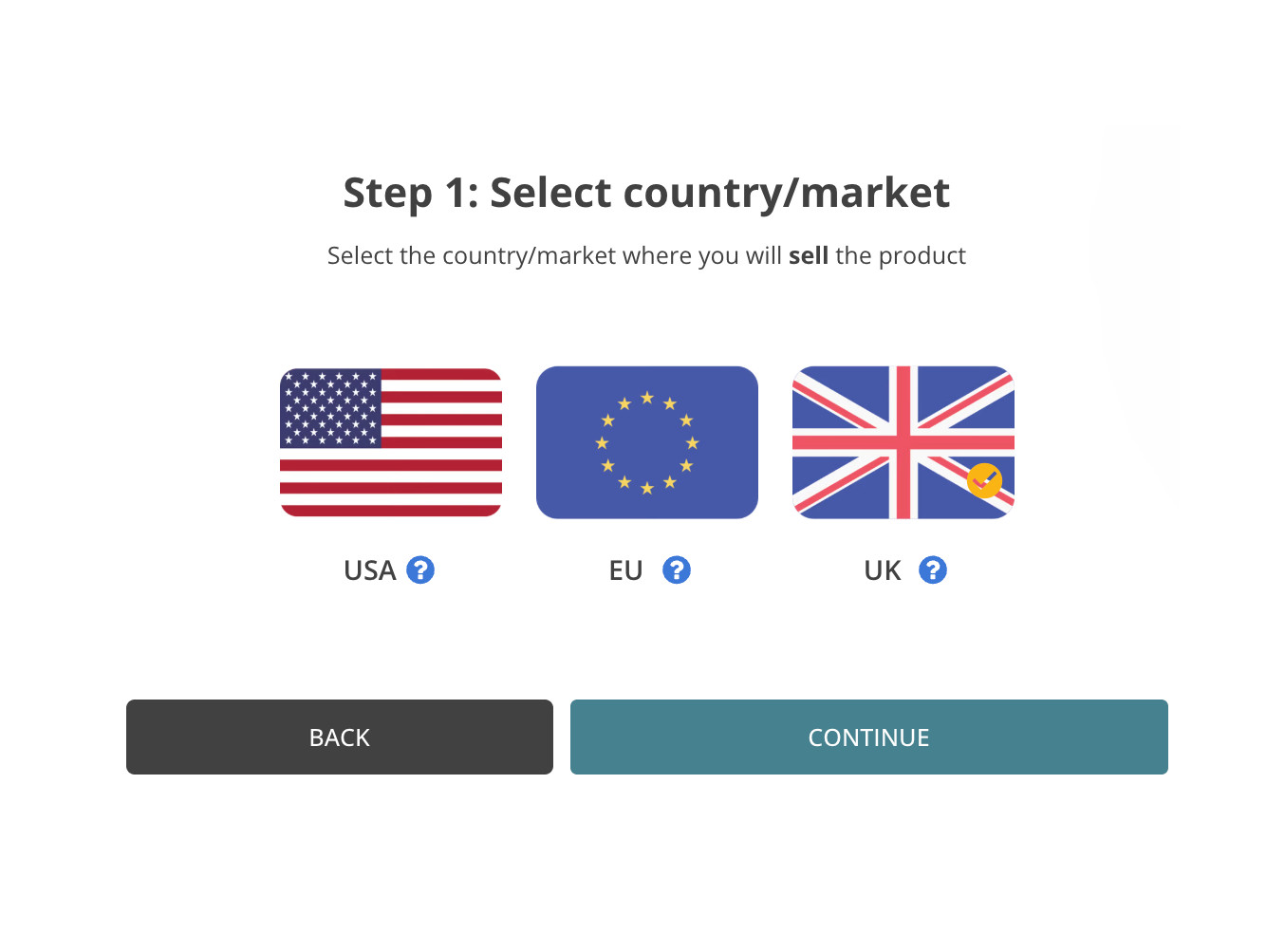

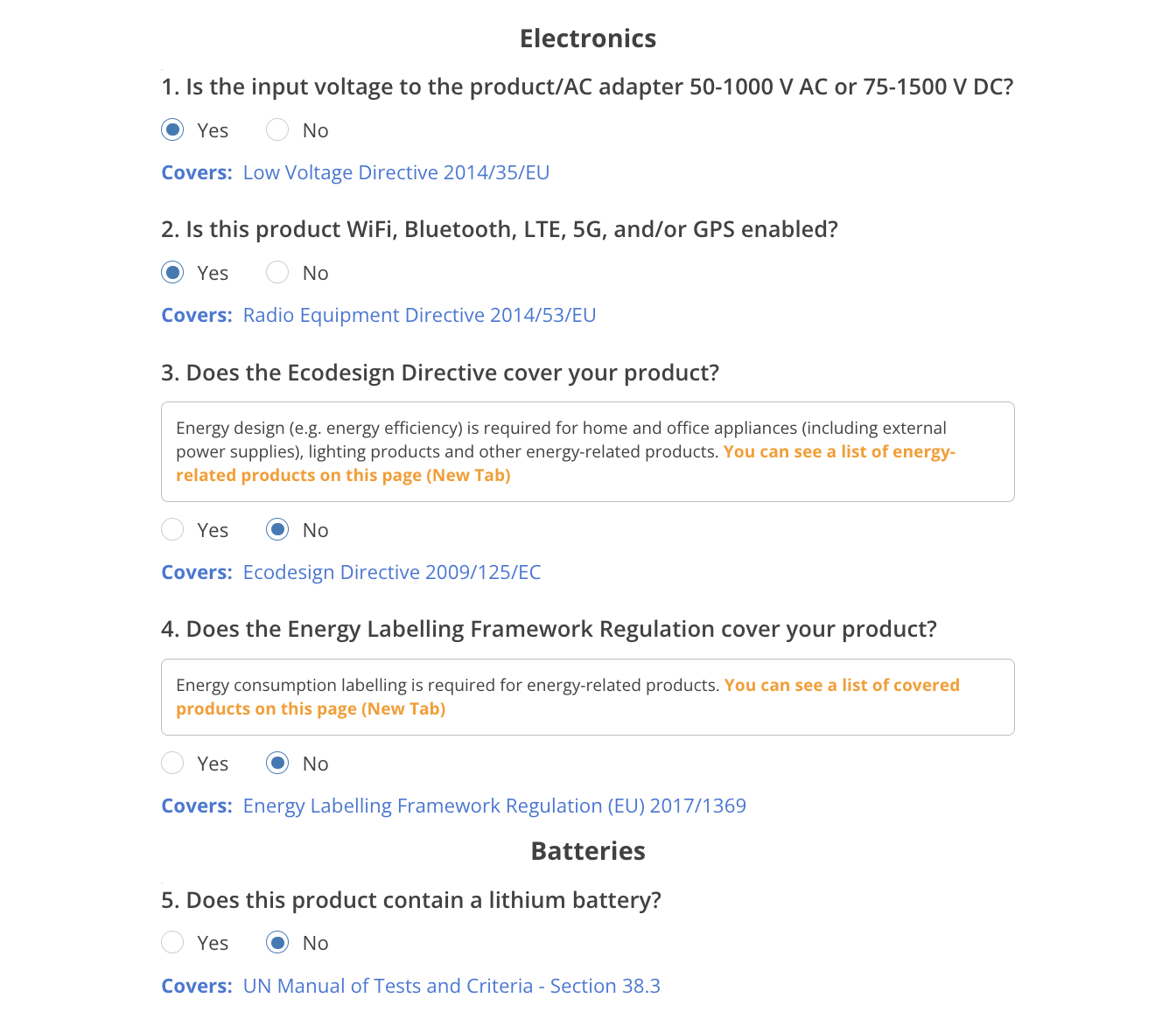
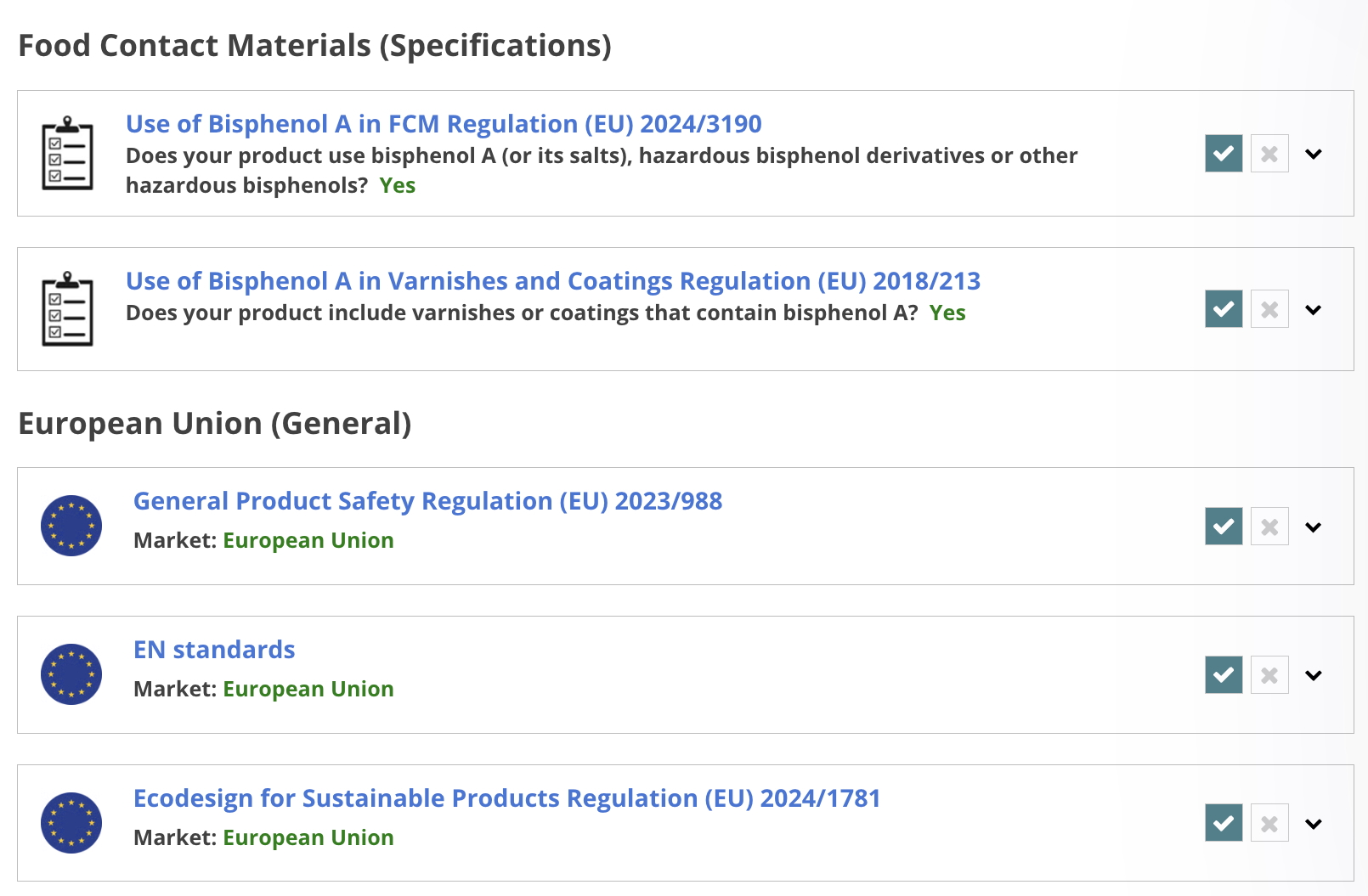
.png)





